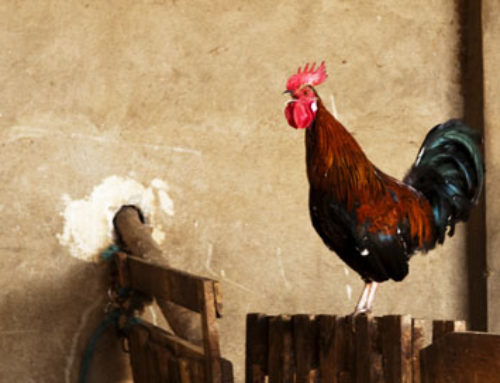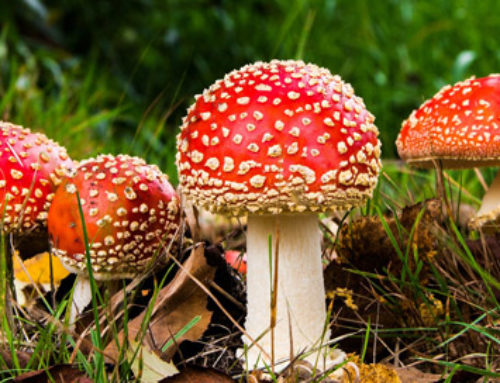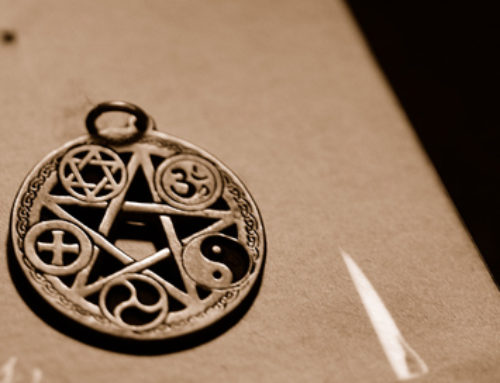 The luck of the four-leaf clover is the most identifiable clover superstition but is only a small piece of clover lore. Clovers are versatile plants capable of bringing you a spouse, healing your ailments, or driving away evil spirits. Depending on the variety and number of leaves, the superstitions surrounding clover can vary widely.
The luck of the four-leaf clover is the most identifiable clover superstition but is only a small piece of clover lore. Clovers are versatile plants capable of bringing you a spouse, healing your ailments, or driving away evil spirits. Depending on the variety and number of leaves, the superstitions surrounding clover can vary widely.
Clover is the common name for a genus containing over 300 species of plants. The two most common, both in lore and use, are white clover and red clover. White clover is characterized by its pink-tinged white, spiky ball-shaped flowers, and red clover has dark pink flowers fading to white at its base. Both of these three-leafed varieties are widely cultivated as feed for livestock.1
 Clover was believed to have a number of medicinal properties. It was used as a painkiller by Scottish wives, but the plant had to be gathered in silence with the left hand to preserve its analgesic properties. Red clover was used as a tonic, making those who drank it stronger and more nimble. It was considered a blood purifier and was believed to be particularly effective against cancer.2 White clover was used in Wales to ward off evil spirits. It could also temper lunacy when gathered with a gloved hand. Pliny described using white clover as a curative for poisonous bites.
Clover was believed to have a number of medicinal properties. It was used as a painkiller by Scottish wives, but the plant had to be gathered in silence with the left hand to preserve its analgesic properties. Red clover was used as a tonic, making those who drank it stronger and more nimble. It was considered a blood purifier and was believed to be particularly effective against cancer.2 White clover was used in Wales to ward off evil spirits. It could also temper lunacy when gathered with a gloved hand. Pliny described using white clover as a curative for poisonous bites.
Washing with clover, particularly red clover, also had numerous benefits. Red clover could be mixed with morning dew and applied to prevent the appearance of freckles. Taking a bath surrounded in the sweet scent of clover could also attract money and prosperity. If an evil or unwanted ghost was lingering around the home, washing the floors in a clover solution would chase them out.
 Even dreaming of clover was considered fortuitous. The Romani associated dreams with clover as bright and happy. Walking through healthy clover fields in dreams brought all the things the dreamer desired closer. Only dreams where the clover is dead or a snake lies hidden within foretold ill omens. Eventually the saying “to be (or to live) in clover” was coined. The saying meant to live a carefree life of ease, comfort, or prosperity.3
Even dreaming of clover was considered fortuitous. The Romani associated dreams with clover as bright and happy. Walking through healthy clover fields in dreams brought all the things the dreamer desired closer. Only dreams where the clover is dead or a snake lies hidden within foretold ill omens. Eventually the saying “to be (or to live) in clover” was coined. The saying meant to live a carefree life of ease, comfort, or prosperity.3
Shamrock
The shamrock is a young sprig of clover having three leaves. Its name is derived from the Irish seamróg the diminutive version of the Irish word for clover. Meaning “little clover” or “young clover,” the English word shamrock was first found in A Historie of Irelande by Edmund Campion in 1571.4
Three is a significant number in a lot of faiths, and the shamrock was often used as a symbolic representation of three. The Druids utilized the shamrock as a symbol of the Vernal Equinox. It was considered a powerful charm allowing them to see evil spirits. In the fifth century St. Patrick plucked a shamrock to explain the doctrine of the Holy Trinity to an assembly of chieftains. The three leaves upon one stalk were used to illustrate the mystery of God being one entity but divided into three—the Father, the Son, and the Holy Spirit.
 After the establishment of St. Patrick’s Day, shamrocks were worn in honor of the man who converted Ireland to Christianity. At the end of the day, the Irish would go celebrate the saint by “drowning a shamrock.” They placed the shamrock from their lapel in a glass of grog or punch, drank the beverage, and took the soaked sprig out to throw it over their left shoulder.
After the establishment of St. Patrick’s Day, shamrocks were worn in honor of the man who converted Ireland to Christianity. At the end of the day, the Irish would go celebrate the saint by “drowning a shamrock.” They placed the shamrock from their lapel in a glass of grog or punch, drank the beverage, and took the soaked sprig out to throw it over their left shoulder.
The use of the shamrock as a charm persisted through the Christian conversion.5 Between the fifteenth and the seventeenth century, shamrocks were worn by peasants and knights on the right arm as protection against the influence of witches. After being worn by the Irish Volunteers, warbands arising to defend Ireland from French and Spanish attack, the symbol became a national emblem of Ireland in the eighteenth century.6 It never lost its association with good luck. Irish couples to this day often incorporate a shamrock in the bride’s bouquet and the groom’s boutonniere.
Four-leaf Clover
“If a man walking in the fields finds any four-leaved grass, he shall, in a small while after, find some good thing.”- John Melton
 The four-leaf clover is a universal symbol of good luck. The first literary reference as a lucky charm was written by Sir John Melton in 1620. With clover’s already propitious reputation, it is easy to see how an uncommon version could be considered luckier.7
The four-leaf clover is a universal symbol of good luck. The first literary reference as a lucky charm was written by Sir John Melton in 1620. With clover’s already propitious reputation, it is easy to see how an uncommon version could be considered luckier.7
The shamrock’s sight granting abilities are increased in the four-leaf variety. When held on Christmas Eve the four-leaf clover reveals witches. Also children of the Middle Ages believed that they could see fairies while carrying one. It could break the power of illusions and was an ingredient of the fairy ointment that granted sight of the supernatural. The bearer of a four-leaf clover could not be tricked or swindled because the clover grants the ability to see and know the truth.
In addition to sight, the four-leaf clover offers magical protection from evil spirits and wards off bad luck.8 Its presence could even drive the devil away.9 When encountering a werewolf, a four-leaf clover made any bullet shot from its owner’s gun fatal for the lupine beast. Four-leaf clovers, instead of flower petals, are scattered down the aisle in front of the bride for added protection on her wedding day.10
The bride may already have had one in her possession that facilitated meeting her spouse. If a single woman finds a four-leaf clover and places it in her shoe, she will either marry the first eligible man she crosses a bridge with or will marry someone with the same given name as the first man she meets. She may also place it above the door, and the first man who walks through will be her future husband.
 The leaves of the four-leaf clover have been assigned various meanings, mainly through poetic verse. One defined the leaves as faith, hope, love, and luck. Another designated them as fame, wealth, a faithful lover, and glorious health.
The leaves of the four-leaf clover have been assigned various meanings, mainly through poetic verse. One defined the leaves as faith, hope, love, and luck. Another designated them as fame, wealth, a faithful lover, and glorious health.
Chanting one of these verses then twirling the clover in your right hand may even grant a wish. Just remember a four-leaf clover that is stumbled upon is luckier than one searched for. If you happen to see one and leave it unpicked all the good fortune it would have brought you will turn bad. Don’t show anyone your lucky find or it will lose its powers, and never take it into a church or the luck will be reversed.
Other Leaves
Finding clovers with leaflet counts other than three or four have different meanings.
A two-leaf clover indicates the finder will be meeting her future spouse, as long as she put it in her right shoe. If it was found by accident she could place it under her pillow and dream of her future love.
A five-leaf clover may spell disaster. Many people consider the five-leaf an unlucky find. Others say it is even luckier than the four-leaf. This lucky interpretation grants fortune.
A clover with more than five leaves has similar contradictory superstitions.11
Finding a four-leaf clover
For about a year, I actively sought four-leaf clovers. Although I was nowhere near as successful as Edward Martin Sr., who found 111,060 four-leaf clovers within eight years,12 I did have some success. I thought I would share some tips to find your very own.
-
- Find a big patch of clover. Patches along roadways and at car rest spots are four-leaf gold.
- Scan for leaves that are in a T-shaped layout. The fourth leaf can often push the closest leaves in line with each other.
- Don’t focus on the leaves. Focus on the center. Leaves will overlap, but if it has four leaves it will have a different shape where the leaves join the stalk.
- Look for the odd-leaf out. Often one leaf is smaller than the rest. Try to find a clover where three leaves are about the same size and one is different.
- Look for smaller clovers. Often the four-leaf clover is smaller than the ones immediately surrounding it.
- Shifting the leaves often helps.
- Don’t give up. Keep trying in different clover patches if you don’t find something.
- Be patient and enjoy the hunt.13

Footnotes
1. Clover is an impressive crop. Highly renewable and hardy, it grows in a wide variety of soils and climates. The palatable and nutritious feed fixes nitrogen in the soil reducing the need for synthetic fertilizer and is ideal for green composting.↩
2. The medicinal benefits of red clover are not completely unfounded. Red clover contains an anticoagulant that has been used in the treatment of asthma and lymphedema. It also contains isoflavone and a phytoestrogen that can mimic estrogen. Some studies indicate that the phytoestrogen in red clover may be protective against several health disorders including cardiovascular disease, and consumption of foods rich in isoflavone may have an association with lower rates of postmenopausal cancer.↩
3. The easy lifestyle may have even been achieved with the use of clover.↩
4. Campion wrote that “shamrotes” were eaten by the Irish population. Less than thirty years after its publication the debate regarding what variety of plant he was referencing began. John Gerard defined the shamrock as red or white clover in 1597. Although white clover is the most frequently identified as shamrock, wood sorrel and lesser clover have large support. In 1893 Nathaniel Colgan surveyed the population regarding the matter, and there was no consensus. This survey was repeated in 1988 with similar inconclusive results.↩
5. Dreaming of a shamrock meant good health and longevity to the Romani. Another interpretation of a shamrock in a dream was that it foretold a journey by water.↩
6. In 1952, John Hearne, Ireland’s ambassador to the United States, started the annual shamrock ceremony. In an attempt to solidify relations with the United States Hearne sent President Harry Truman a bowl of shamrocks. The tradition has continued for sixty-four years.↩
7. The probability of encountering a four leaf clover is about 1 in 10,000. The saying “luck o’ the Irish,” is sometimes claimed to originate because there is a higher probability of finding a four-leaf clover on the Emerald Isle.↩
8. There is a story that Eve took a four-leaf clover from the Garden of Eden as a reminder of happiness when she and Adam were being expelled.↩
9. The devil may be driven away by its cross-like form of the four leaves.↩
10. When I came across this custom I wondered if the incorporation of four-leaf clovers may be a guard against fairy interference. A common motif in fairy folklore is the kidnapping of new brides. The use of four-leaf clovers would not only acts as a protection against evil but also break the illusion of any fairy who may want to whisk the bride away.↩
11. The record for most leaflets on a clover (Trifolium repens L.) is fifty-six. It was found on May 10, 2009 by Shigeo Obara of Hanamaki City, Japan. Mr. Obara studied clovers and was the previous record holder as well. When asked by press about his find he said, “I never dreamed of seeing this many leaves on a clover.”↩
12. Edward Martin Sr. from Cooper Landing, Alaska, USA, is the current Guiness Book of Records holder for largest four-leaf clover collection. He beat out George Kaminski, a Pennsylvania prisoner who had managed to find 72,927 four-leaf clovers from prison yards. Kaminski died still incarcerated in February 2008 after a transfer to a clover-free prison. Martin was saddened by his death. He considered Kaminski a worthy rival and kindred spirit in clover collecting.↩
13. Never iron a four-leaf clover. You wouldn’t want to press your luck.↩
Sources
Archer, Ben. “What Causes Four-leaf Clovers.” Popular Science. Vol. 259, No. 2. Aug 2001. pg 76.
Bonwick, James. Irish Druids and Old Irish Religions. Griffith, Farran & Co. London. 1894.
Moran, Patrick Francis Cardinal. “St. Patrick.” The Catholic Encyclopedia. Vol. 11. Robert Appleton Company.New York. 1911. Date accessed Sept. 13, 2016.
Pegg, David. “25 Strangest Superstitions From Around The World.” List25.com. June 12,2013. Date accessed Sept. 13, 2016.
Dolnick, Barrie and Anthony H. Davidson. Luck: Understanding Luck and Improving the Odds. Random House. 2007.
Binney, Ruth. Nature’s Ways: Lore, Legend, Fact and Fiction. David & Charles. 2006.
Westropp, Thomas Johnson. A Folklore Survey of County Clare. 1910 and 1913.
“Most leaves on a clover.” Guinness Book of World Records. Date accessed Sept. 13, 2016.
“Largest collection of four-leaf clovers.” Guinness Book of World Records. Date accessed Sept. 13, 2016.
Bayley, Harold. The lost language of symbolism : an inquiry into the origin of certain letters, words, names, fairy-tales, folklore, and mythologies. Barnes & Noble Inc. 1912.
Omurethi. Journal of the Co. Kildare Archaeological Society and Surrounding Districts. Volume 5. The Society. Kildare, Ireland. 1908.
Craig, Katherine Taylor. The Fabric of Dreams: Dream Lore and Dream Interpretation, Ancient and Modern. E. P. Dutton & Company. New York. 1918.
Miller, Gustavus Hindman. Ten Thousand Dreams Interpreted, or what’s in a dream: a scientific and practical exposition. G. W. Dillingham Company, New York. 1901.
George, Jason. “160,000? That’s a lot of luck.” Chicago Tribune. March 17, 2008.
Friend, Hilderic. Flowers and Flower Lore. W. S. Sonnenschein, 1884.
Watts, D.C. Dictionary of Plant Lore. Academic Press. May 2, 2007.
Photo Credits
Main Image: Four-leaf Clover on Wood by Claudia (Bella67)
Four Leaf Clover in Hand by PublicDomainPictures
Four Leaf Clover in Grass by Claudia (Bella67)
Four Leaf Clover by Cygnus921
Clover Patch by Susanne Hornauer
Clover Heart by Mev
Shamrock by Oatsy40
Combined Images: Red Clover by Ivar Leidus & White Clover by Anja (cocoparisienne)
Clover Collection by E.M.A. Timar






Really cool post. Love the collection. Makes me want to search right now. Thank you so much.
Thanks for all your support Dawn. I really appreciate it.
Good luck on your clover hunt!
This is a great post! Thanks for sharing these facts with your followers. I’ve shared generously online. All the best, my dear!
Thanks so much Victoria.
“13. Never iron a four-leaf clover. You wouldn’t want to press your luck.” LOL!
Bill, #13 made me laugh too. This whole post was a fun, informative read.
As a child, I spent many hours plucking in hope of finding a four-leaf clover. No such luck.
I love your posts!!!!
Today I found 4 fourleaf clovers and two 5 leaf clovers. I seem to find them very easily just walking most of the time.
I know that once I started finding them it seemed much easier to find more. You definitely have the eye, Bob.
Hi there,
So I want some clarity. I have a red clover plant growing in my front yard.
The thing is, it has so many different leafs, 4 leaf, 5 leaf, 6 leaf, it’s a big plant.
I’m a bit superstitious, does this mean good luck is coming?
But what happens if you put a two-leaf clover in your right shoe?
Earlier today in my backyard I was playing with my nephew and I fou”d five 5 leafs in under one or two mins… I had look and see what the web had to say about somthing so uncommon.. I enjoyed your post, i found it very informative and relatable!